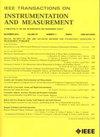HVDNet: An Interpretable Deep Learning Framework for Heart Valve Disease Classification Using Tri-Axial Seismocardiogram Signals
IF 5.6
2区 工程技术
Q1 ENGINEERING, ELECTRICAL & ELECTRONIC
IEEE Transactions on Instrumentation and Measurement
Pub Date : 2025-02-10
DOI:10.1109/TIM.2025.3540129
引用次数: 0
Abstract
Effective screening for heart valve disease (HVD) is crucial for impeding its progression. However, current approaches lack transparency in classifying diverse HVDs. The seismocardiogram (SCG) signal provides comprehensive insights into cardiac activities across three axes, offering valuable information for detecting valvular abnormalities. To leverage this potential and address the aforementioned challenges, we propose HVDNet, an interpretable deep-learning framework for HVD classification using tri-axial SCG signals. The architecture integrates three modules: stacked 1-D convolutional neural networks with skip connections (sCNNs) to learn hierarchical features associated with morphological variations in SCG at different scales, long short-term memory (LSTM) layers to capture temporal variations within the feature maps, and self-attention (SA) layer to emphasize clinically relevant attributes. Evaluation on publicly available SCG databases demonstrate high accuracies: 99.35% on the validation set and 98.98% on the test set for HVD without co-existing diseases, and 99.21% on the validation set and 98.89% on the test set for aortic stenosis (AS) co-existing with other HVDs. Through an ablation study of different model variants, we found that integrating information from each axis component of the SCG signal yields optimal performance. Moreover, closely examining the learned attention weights reveals how the model emphasizes clinically relevant SCG attributes that characterize HVD. With its inherent transparency and superior performance compared to existing methods, the proposed model can become a reliable diagnostic tool for HVD, potentially improving patient care and treatment efficacy.求助全文
约1分钟内获得全文
求助全文
来源期刊

IEEE Transactions on Instrumentation and Measurement
工程技术-工程:电子与电气
CiteScore
9.00
自引率
23.20%
发文量
1294
审稿时长
3.9 months
期刊介绍:
Papers are sought that address innovative solutions to the development and use of electrical and electronic instruments and equipment to measure, monitor and/or record physical phenomena for the purpose of advancing measurement science, methods, functionality and applications. The scope of these papers may encompass: (1) theory, methodology, and practice of measurement; (2) design, development and evaluation of instrumentation and measurement systems and components used in generating, acquiring, conditioning and processing signals; (3) analysis, representation, display, and preservation of the information obtained from a set of measurements; and (4) scientific and technical support to establishment and maintenance of technical standards in the field of Instrumentation and Measurement.
 求助内容:
求助内容: 应助结果提醒方式:
应助结果提醒方式:


